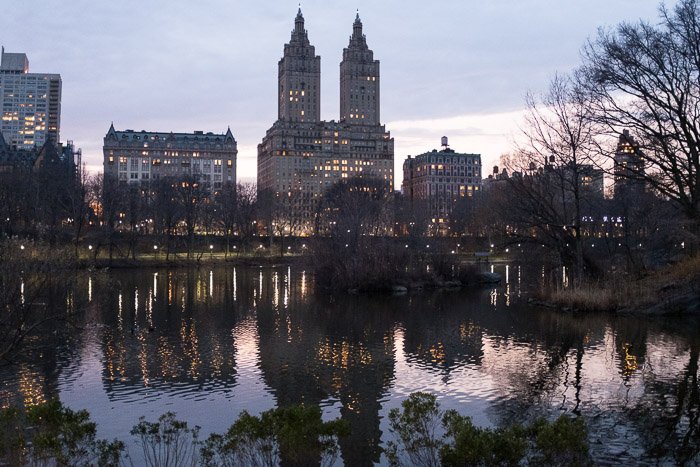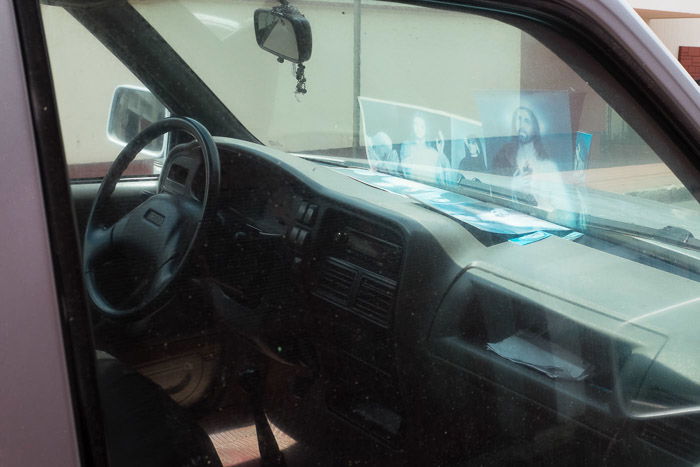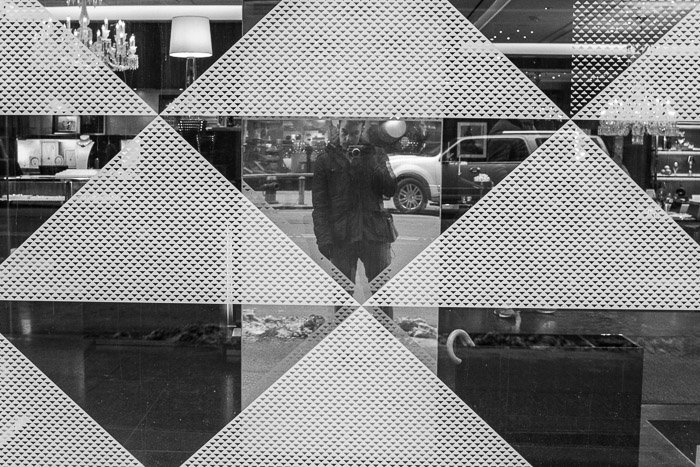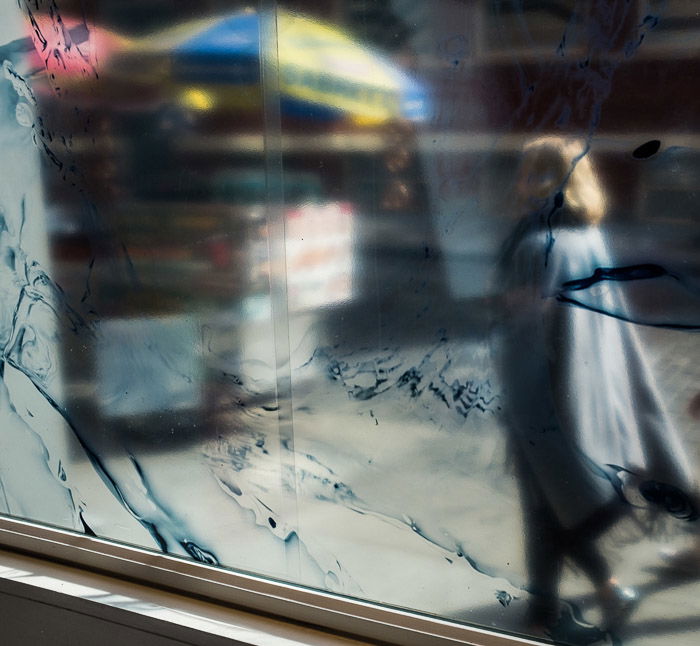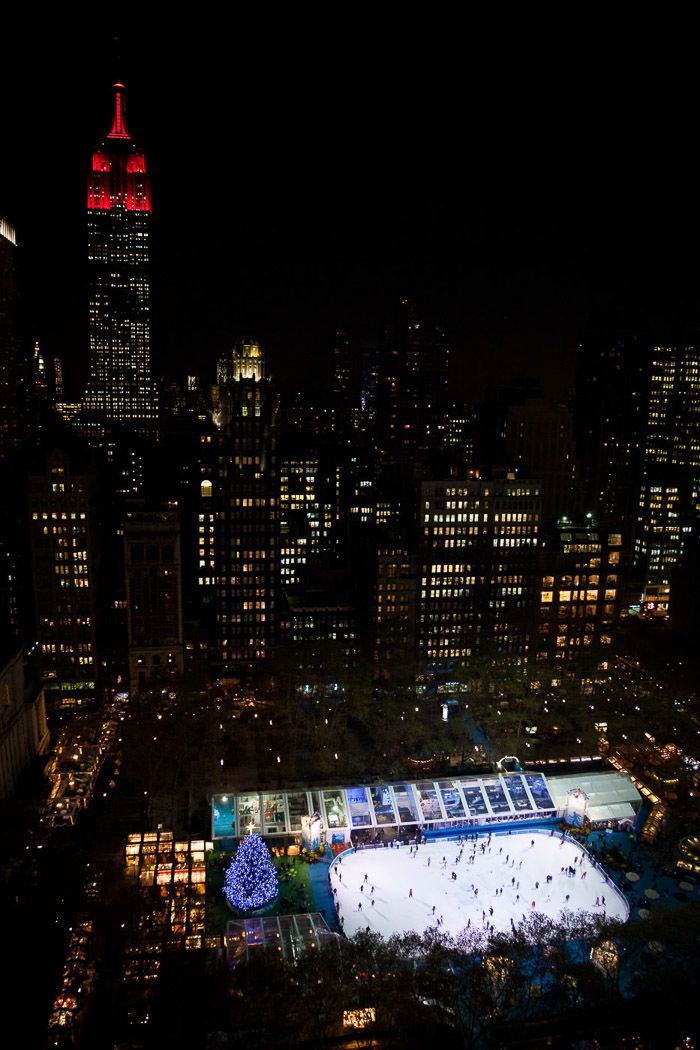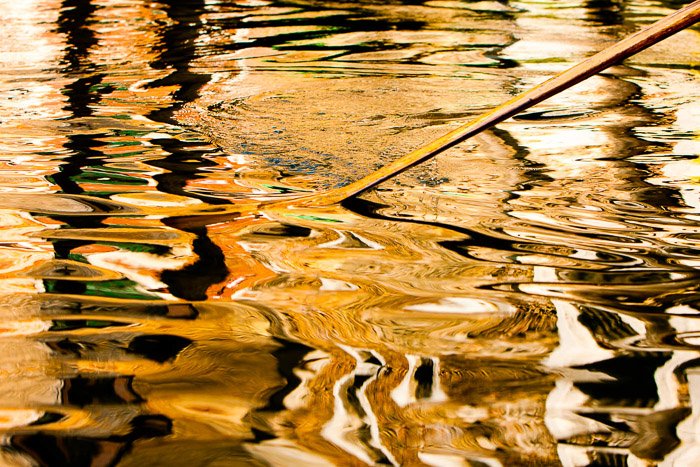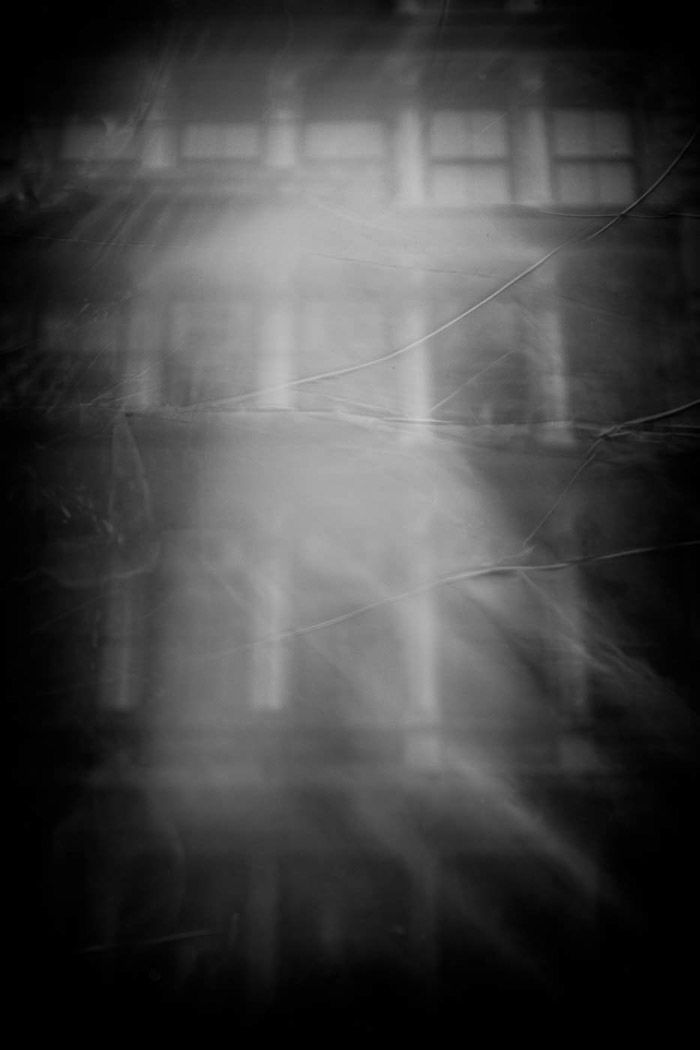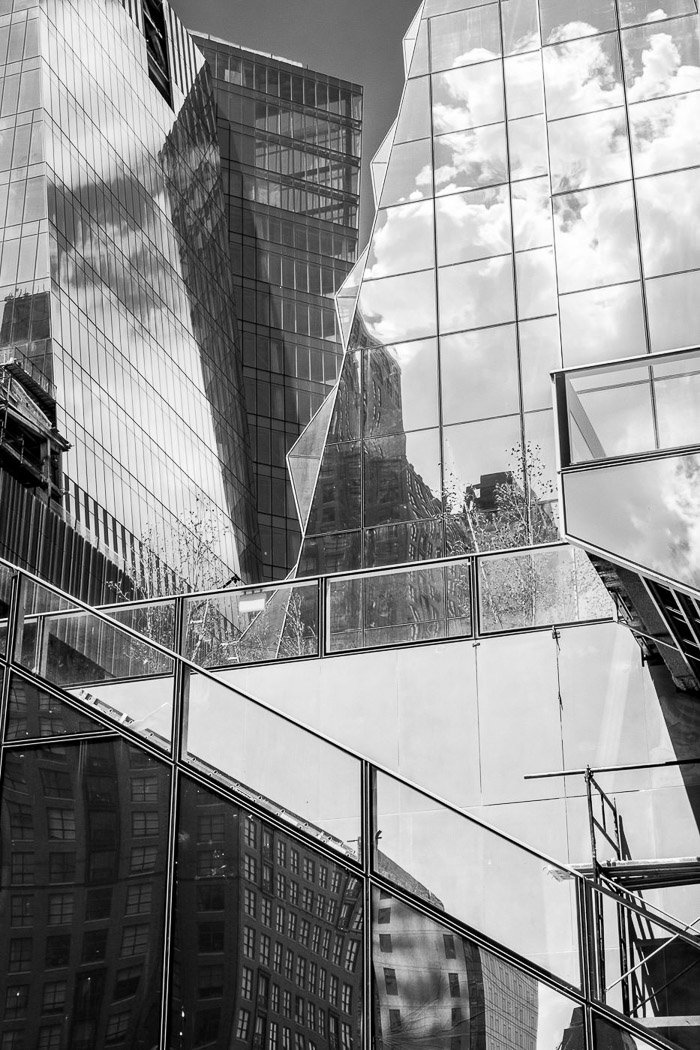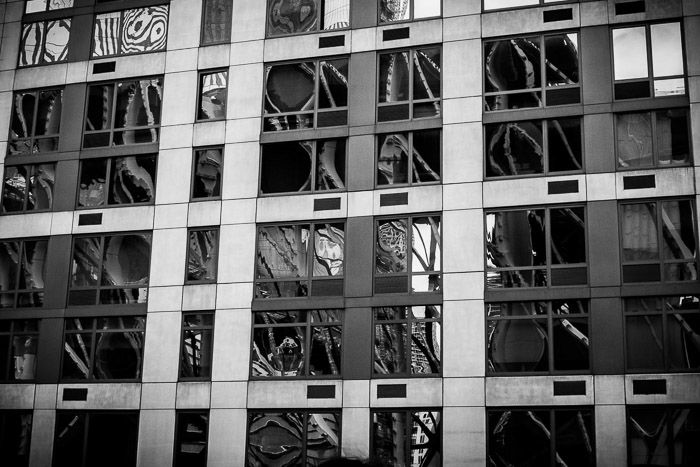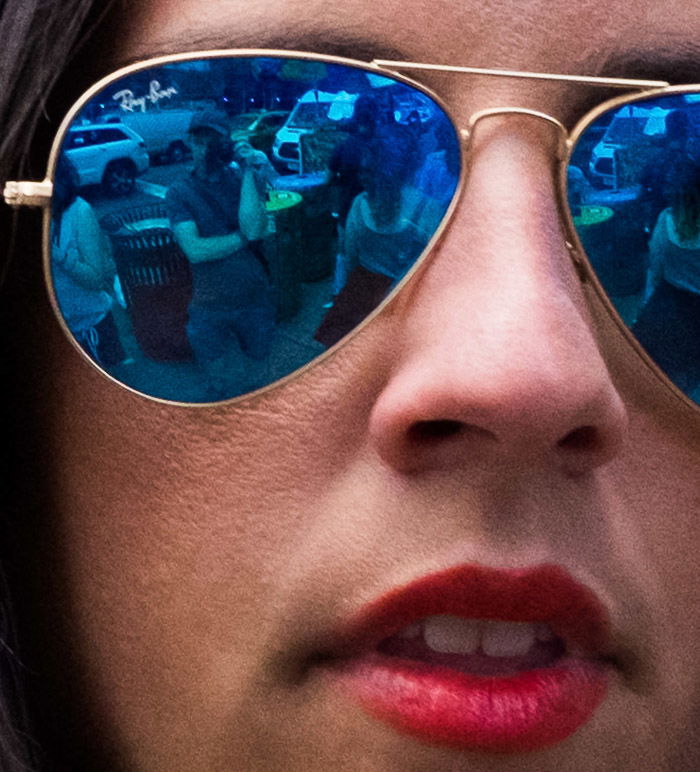Reflections can take your photographs to a new level of visual interest or ruin them by getting in the way of what is important. This post gives you some ideas on how to creatively capture reflections when out on the streets.
9 Creative Urban Reflection Photography Tips
Grab your camera for street photography and head outside. These nine tips will show you how to discover and take reflections.
1. search for Reflections
This tip sounds simple, but it is very important to start with. Stop yourself while photographing so you can begin to notice the reflections. Otherwise, it can be very easy to miss them. Look at windows or reflective surfaces such as metal or water, take note of straight and curved glass, and shoot in wet weather. Rain is one of the best weather types to photograph because it can make all types of surfaces reflective. Training your eye to first notice them eventually makes it second nature.
2. Look at Every Element in the Scene
Some reflections can be simple to work with. But the more reflective a surface is, the more potential there is for improving your image and ruining it. Every element counts, so put each object in the right position. When working through glass, combine elements behind it with reflected elements. This will create unique, complex, and interesting scenes.
Change your angle. Move up, down, left, right, and back and forth to find the perfect angle. A slight movement can remove a distracting element or place the reflections in a more pleasing organization. The more complex the scene, the more important subtle movements can be to create a pleasing composition.
3. Watch Out for Your Own Reflection
Do not be afraid to include yourself in the image. Take after the famous street photographer Lee Friedlander, who never saw a reflection in which he didn’t want to capture himself. The possibilities for interesting self-portraits are endless. But in some photographs, you will want to remove your presence. Make sure to notice when you are being reflected. Sometimes your reflection will show up more in the photograph than in the real scene. If you face the reflective surface, you will be in the reflection, so move to a slight angle to one side to remove yourself. What you wear matters as well. Dark clothing often looks great for creating an interesting silhouette of yourself.
If you are wearing dark clothes, find a window with a brighter background to stand out more. The opposite applies if you are wearing a white outfit. The contrast will help you stand out if that is the effect that you want. Experiment with shooting from chest height with the camera to show your face. It can be difficult to get everything in the frame correctly since you will not be looking through the viewfinder, but it just takes a bit of luck with framing. Consider whether you want to look directly at the reflection or off to the side to seem more candid and natural.
4. Wait for People to Walk By
If your shot seems to be missing a point of interest, then a good solution is to wait for an interesting person to walk by to add to the reflection. Wait for something to happen to complete your scene but don’t just wait for any person to walk by. If you are going to include a person in your scene, they have to fit with the image and stand out in some way. Maybe they have an interesting silhouette or clothing. Maybe they have a great stride, or maybe a great expression. If you wait to include a person in your photograph, ensure the person fits.
5. Take Control of the Reflections
Sometimes you do not want reflections to be in your scene. Occasionally, there will be nothing you can do, but sometimes you can fix the situation. Polarizing filters are very effective for removing reflections in water, windows, or any reflective surface, so experiment with one. You can also control the highlights in the background that are being reflected. Unless the image is very white, highlights will usually stand out. People with white shirts, white cars, and anything with white will stand out.
Angle yourself so that they don’t show up in your reflection or so they are out of the way and not distracting. If you are photographing a scene through a window, reflected lighting and white objects from the interior will often annoyingly get in your way to ruin the image. Angle yourself, so these highlights will not be shown in the scene. If you can, shut off all the lights in the room, which will help with the reflections. This should help you capture a clear view in your reflection photography, like this one here.
Finally, be careful about reflecting text in reflection photography. Our eyes are naturally drawn to words in an image, which will be flipped around when reflected. This can distract your viewer. Sometimes it could add something interesting to the image, but avoiding large words in the reflection is generally a good idea.
6. Alter Your Depth of Field
Test out both a shallow and deep depth of field in your reflection photography. A shallow depth of field will blur the reflection more to create a pretty pattern and view. A deep depth of field will show the reflections closer to their true form. Both can be beneficial depending on the type of scene you are creating, so think about what aperture might be best before you take a photograph.
7. Take Some Weird Images
Reflection photography can look weird. They might be pretty in a unique way and not something that is traditionally thought of as pretty. Embrace this. Create mysterious, ambiguous, and flat-out strange images using reflection. Don’t shy away from creating something that goes beyond the traditional. Strange can be good.
8. Get Creative Post-Processing Reflections
Photographing a reflection will often give you a flat image that lacks contrast. When objects are reflected or shown through glass, they usually stand out less than they would if you were looking directly at the subject. Use Lightroom or your favorite editing program to bring these objects out. Increase the contrast or the highlight and white levels, play with the shadow and black levels, and use the clarity slider to sharpen everything up. This will create a punchier image that will offset the muddy nature of reflection negatives.
9. Try Black and White
Reflection photography in black and white often looks much better than in color. This allows the highlights, shadows, and tones to come together to create an interesting scene. Many reflection images will look fantastic in color, but a higher percentage will look good in black and white. Experiment with post-producing your pictures in black and white. This will help improve both the impact and the interest of the photograph.
More Reflection Photography Examples
Here are a few more creative examples to inspire you. The reflection image possibilities are endless.
Do you love taking vibrant urban images? Take a look at our Urban Smartphone Minimalist e-book!
